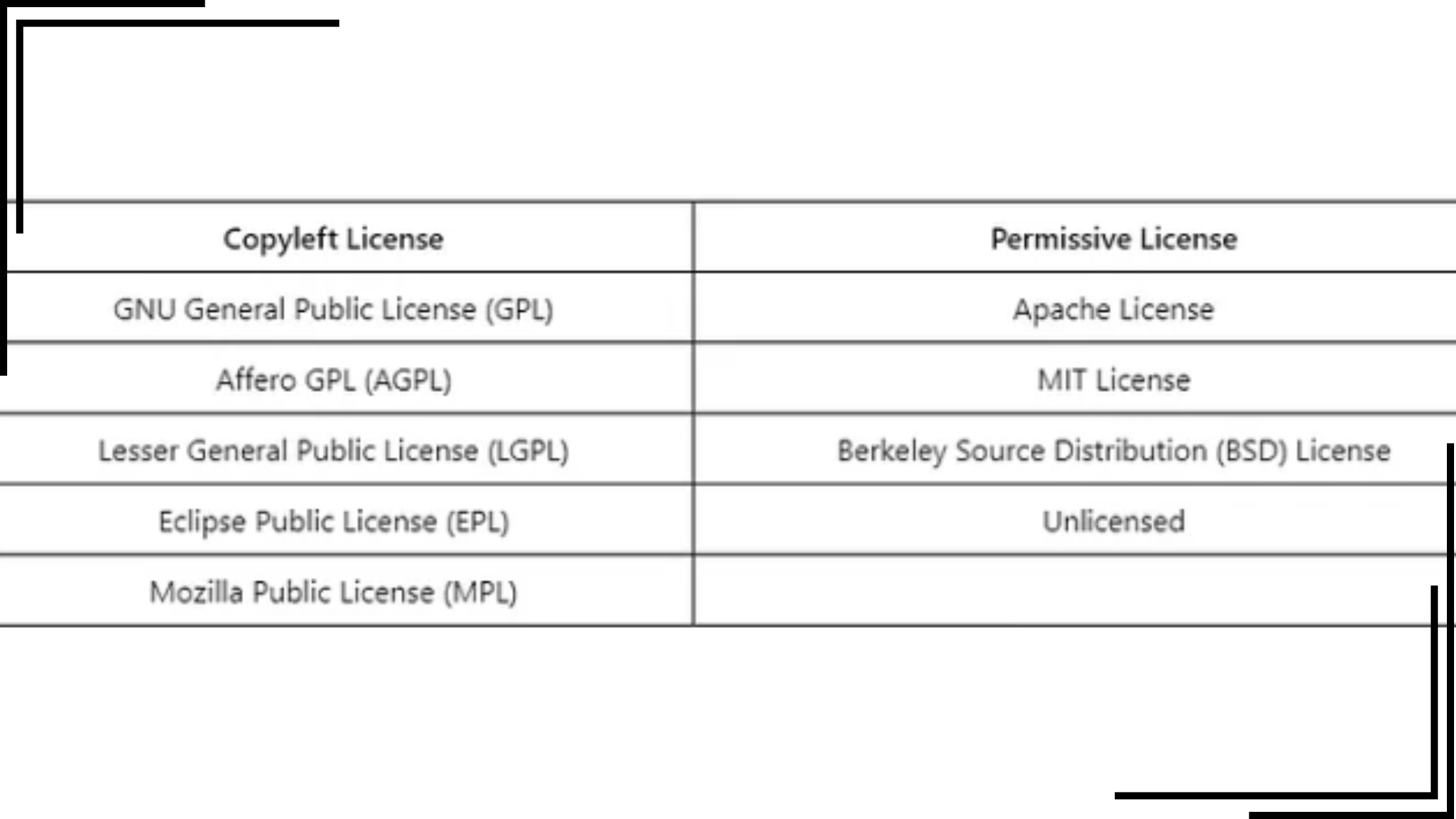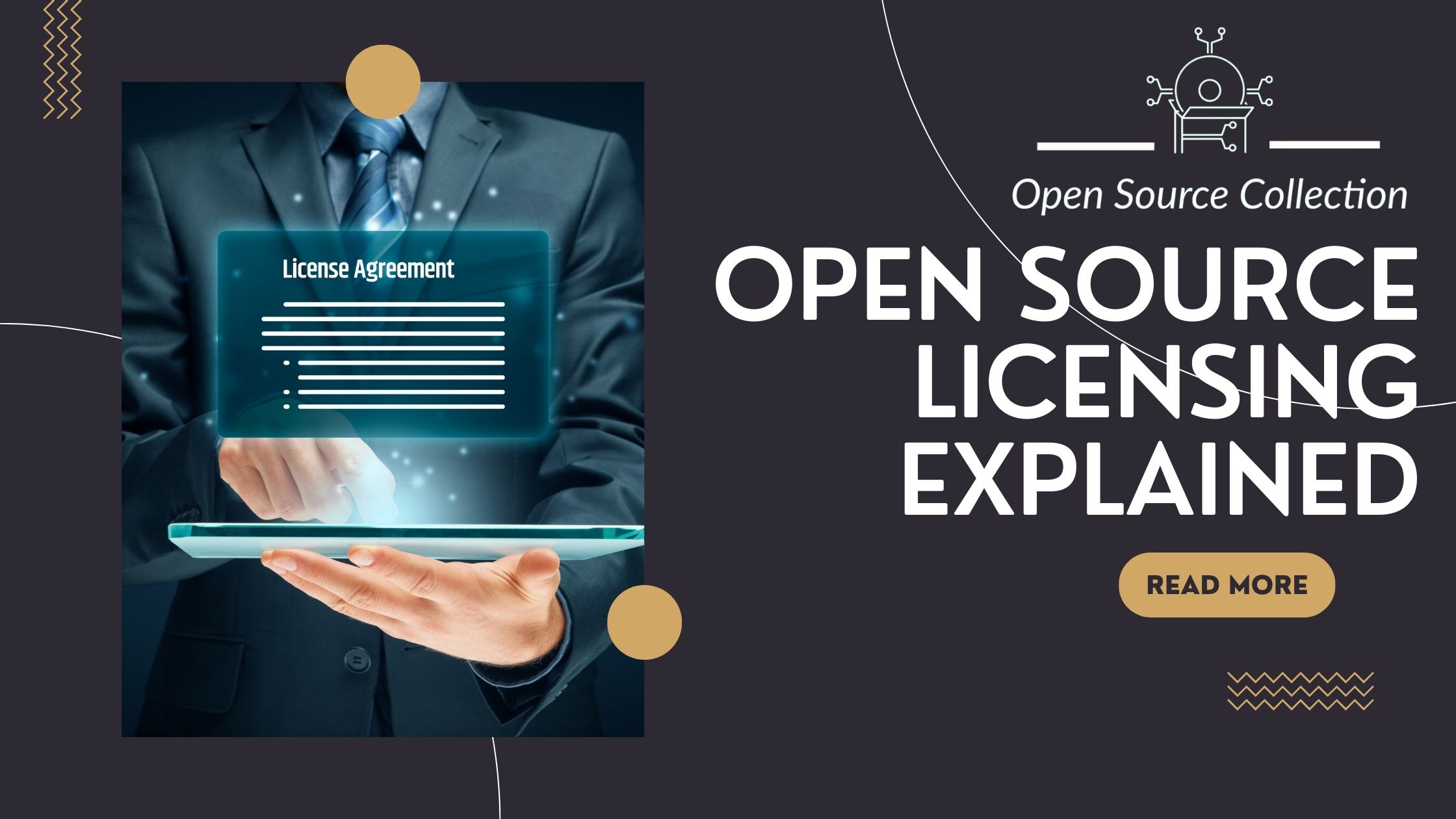The open source license is a legal document that defines a set of conditions regulating the protection of the author’s work in cooperation with the user; that is significant in the business usage of a certain product. This is the license that makes software components open source components and enables the developers to use the software while being bound to some of the requirements that have been put forward in the license.
There are a whole lot of open source licenses out there, that number in the hundreds – more than 200 to be precise. Fortunately, there are only several open-source software licenses available from which software can be downloaded and used. This is a very simplistic view of each license before I get into the specifics to assist with making large decisions on your code. Here we will explain to you all the details related to open source licensing, so keep scrolling for more information…
Types Of Open Source Licenses: Copyleft And Permissive Licenses
Now, it is time to analyze what general concepts are prevailing in open-source licenses. There are two main categories of licenses: plagiarism and license are copyright and liberal respectively. This division is done according to requirements and limitations that define the users’ capability on license.

Copyleft License
When an author uploads a program to be under a copyleft license, the author asserts his or her having copyright in the work and tells anyone volunteering to use, modify, or distribute the work to do so subject to the condition that he or she similarly extends the same to other people. simply, if they are using a component with such an open source license, then they too have to make their code open for use by other persons as well. Whether such conduct is permitted in all the code that they have written or just the changes they made in the licensed code will depend on the license.
Permissive License
A permissive open-source license is a non-copyleft type that allows use, modification, and distribution while permitting proprietary modifications. This type of license affords little control to the free use of components by others in their projects. This kind of license offers one some level of latitude as to using, altering, and transmitting open source code, permits its use in proprietary derivative products, and demands barely anything from the applicant about obligations in the future.
Read more about Understanding Software Licenses: Open-Source vs Commercial
Top Open Source Licenses That are Commonly Used
The OSI compiled a list of approved licenses which currently consists of the five most popular open-source licenses.
MIT License
Users are allowed a great deal of flexibility in how they use, alter, and distribute software under the terms of this straightforward and permissive license. This license, which comes from the Massachusetts Institute of Technology (MIT), requires derivative works to include only the original copyright notice and license terms. Other than that, users are free to use it as they see fit. Developers prefer the MIT License because of its flexibility and clarity, which makes it appropriate for both commercial and academic applications. The MIT License governs several popular libraries and frameworks, such as jQuery and React.
The GNU General Public License (GPL)
The most common copyleft license and one that sometimes makes GPL one’s bones is actually a specific implementation of the “copyleft” to be used to stop GNU software from turning proprietary. Due to, the GPL being a comprehensive copyleft license, the code written based on any GPL component must be released as open source under the same or higher license. We have come to learn that any project, regardless of the fraction of its total code represented by these components, must release the entire source code, as well as all the rights thereto for modification and distribution.
There are flexible licenses derived from the GPL such as the Lesser GNU Public License (LGPL) as well as GPL with classpath exception. If these conditions are properly observed, then original works or programs under these ‘weak copyleft’ licenses do not restrict you from integrating them with software that does not qualify for GPL license but would require you to distribute all modified source codes of your program under this form of GPL license.
The Apache License
The Apache 2. Apache 0 License is another open-source software license that has garnered a lot of acceptance among developers and was developed by the Apache Software Foundation (ASF). Probably one of the most liberal licenses available for open-source software, the Apache license enables you to distribute your modifications of Apache-licensed software under any license you might prefer. The Apache Licence grants you the rights to even sell, distribute, modify and use the software for your personal internal, or commercial purposes.
This is the main difference compared to more liberal licenses that are TRIPS-compliant but do not apply to patents and are valid only for copyrights. The rights granted are universal and do not expire, and they cannot be revoked but also is not an exclusive right for only the licensee since anyone can use the licensed work. If you intend to redistribute software with components of Apache-licensed you need to include a copy of the license, the Apache License notice, and add modification notes to the modified files.
Microsoft Public Licenses (Ms-PL)
Microsoft Public License is yet another Permissive License granted by Microsoft for the usage of its various open source projects. The Ms-PL describes itself as short, clear, and simply written; and as subsequently be seen, grants users the right to reproduce and distribute the original or modified work of any software that is licensed under Ms-PL. In so doing, however, the names of the contributors, logos and trademarks shall not be used.
It also affords the authors of the software protection since the license does not contain any express warranties or guarantees hence the authors do not bear the responsibility of code not working well under certain circumstances. When distributing a product under Ms-PL, be it in full or in a modified or even unaltered part of the modified product, you do not have to release the source code. This means that you must keep all contents original to them, like copyright notices, patents, trademarks & attributions.
Berkeley Software Distribution (BSD)
BSD Licenses are relevant for our case since they comprise the family of permissive licenses. BSD license enables you to put your software code in the source or binary form of anyone’s interest while observing a few restrictions such as acknowledging the owner of the code by retaining the copyright notice, conditions for use, and disclaimer.
Originally the 4-clauses BSD license contained a clause that forces any person who develops an application that uses the BSD licensed code to provide earlier authors in their advertisement. The most frequently distributed variant of BSD license is the 3-clause license called Modified BSD License; it eliminates the advertising clause, and the 2-clause license called FreeBSD License eliminates both the advertising and the non-endorsement clauses.
Eclipse Public License (EPL)
Now there is a license called Eclipse that may be referred to as a weak copyleft. The GPL requires you to release modified bits under the GPL, the EPL requires you to release the recent bits under the EPL if you are distributing the source code along with the object code as part of your application software. If you distribute such a program in its object code under these circumstances, you must include the following: The EPL licensed for the software code is available to the recipient free of charge upon request; the means by which request may be made.
The Eclipse Foundation defines that one cannot use components of the Eclipse plugin and be shielded by interface or functional interoperability such that your code becomes a derivative work of the Eclipse plugin. As with all weak copyleft licenses, if you want the rest of the project to have a different license, it is best practice, and dependent on the rules of the weak copyleft license, to keep the EPL’d code in a separate file.
Wrap Up
That is what you got to know about the licenses and the open source licensing and they type, the permissions and copyleft licenses, as well as the criterion that defines the open source license. Spend some time thinking about which open-source license fits best your software according to your personal choice your company's necessities or both.
FAQs
Specifically, open source is a term that describes any program or software whose source code is freely available to be used or modified in any way that is deemed necessary by users or other developers. In contrast, open-source software is defined as computer software that is developed under an open-source model and is made available to the public at large.
Forums, Skype, LimeWire, Opera web browser, GIMP graphics editor, and LibreOffice are considered examples of open-source programs. When using open source software the users agree to the terms of a license just like they do with proprietary software—but the nature of the open source licenses is fundamentally different to that of proprietary ones.
From the perception of open-source SW implies free access to the source code but this freedom is not confined to the cost aspect. It means one is free to use intellectual property, change it, make copies, and distribute it under the license that has been set out.
The open source is a source code that is accessible freely and prepared for possible modification and redistribution. Available products are rights to utilize the source code, design documents, or content of the product. The open-source model is one of the decentralized software development models where all people can join it and contribute.

